Instructional Series
This site will be closing soon as its content has moved to Tāhūrangi.
2024 titles are available on Tāhūrangi. Use the filters to find specific series.
Find Literacy resources at Tāhūrangi - Literacy.
Welcome to the English medium literacy instructional series teaching and learning resources for years 1 to 8.
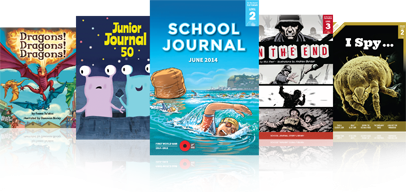
- Gold
- Yellow
- Blue
- Green
- Purple
- Red
- 2
- 3
- 1
- 4
- 6
- 3
- 4
- 5
- English
- Science
- Social Sciences
- The Arts
- Technology
- Health and Physical Education
- Mathematics and Statistics
- Fiction
- Non-fiction
- None
- Nature of science
- Living world
- Number and Algebra
- Gather and interpret data
- Engage with science
- Articles
- Stories
- Poems
- Plays
- Kākano | Seed
- Māhuri | Sapling
- Complex morphemes
- Consonant digraphs
- Short vowels
- Single consonants
- Tense
- Vowel digraphs
Search results
52 items - Showing 31 - 40
-

Mariri the Flying Man
retold by Maria Samuela
When Mariri, a great explorer, realises his homeland of ‘Avaiki has become overcrowded, he and his warriors set off to find a new home for their people. This traditional tale, featuring rich literary language, describes their discovery of an island (now called Atiu) and Mariri’s subsequent, extraordinary plan for getting back to ‘Avaiki to bring his wife to the island.
-
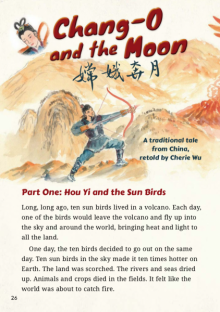
Chang-O and the Moon
retold by Cherie Wu
illustrated by Stan Chan
A traditional Chinese tale that explains the phenomenon of the “goddess in the moon”. This dramatic tale has two storylines, with the first story setting the scene for the main story.
Gold 2
-
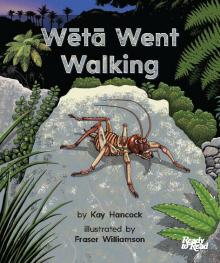
Wētā Went Walking
written by Kay Hancock
illustrated by Fraser Williamson
When Wētā goes walking in the bush, Rat decides to go hunting ... Will Wētā be safe? Does he know Rat is following him?
This dramatic, open-ended story is ideal for fostering students’ enthusiasm and confidence as readers. The rhythmic, repetitive language encourages and supports students to read along with the teacher, even from their first day of school.
#LFH
-
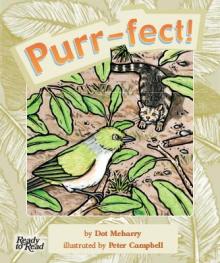
Purr-fect!
by Dot Meharry
illustrated by Peter Campbell
This moral tale about a beautiful but vain and gullible bird and a clever cat has a dramatic ending that is sure to stimulate lively discussion.
Yellow 3
-
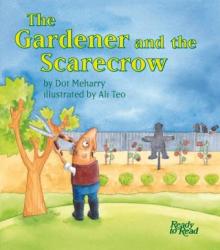
The Gardener and the Scarecrow
by Dot Meharry
illustrated by Ali Teo
In this humorous narrative, the gardener needs to find a way to stop the greedy birds from pecking at his vegetables. Children will enjoy working out what the gardener has in mind!
Blue 2
-
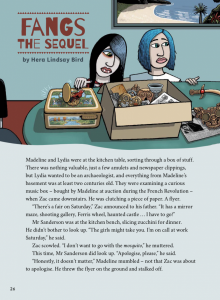
Fangs: The Sequel
by Hera Lindsay Bird
illustrated by Fraser Williamson
"Madeline was a vampire. Not the bloodsucking type – she was vegetarian – but the locals were still afraid of her. She tried taking this in her stride."
-
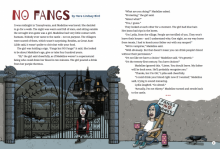
No Fangs
by Hera Lindsay Bird
illustrated by Fraser Williamson
"It was midnight in Transylvania, and Madeline was bored. She decided to go for a walk. The night was warm and full of stars, and sitting outside the wrought iron gates was a girl."
-
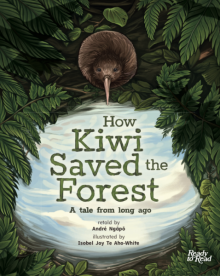
How Kiwi Saved the Forest
retold by André Ngāpō
illustrated by Isobel Joy Te Aho-White
This tale is set at a time in the mythical past when Kiwi can fly, but when the trees of the forest are dying. When Tāne-hokahoka (guardian of the birds) and Tāne-mahuta (guardian of the trees) ask each bird to come and live on the forest floor and eat the insects that are destroying the trees, only Kiwi is prepared to give up his life in the sky.
#LFH
-
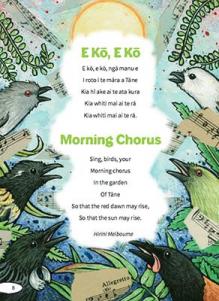
E Kō, E Kō - Morning Chorus (from Night is a Blanket)
by Hirini Melbourne
illustration by Peter Campbell
This Māori song, with an English translation, encourages children to make connections to their experiences of hearing bird songs as the new day arrives. This poem is best used for shared reading. The birds illustrated around the poem are, anticlockwise from top left, grey warbler, stitchbird, tūì, saddleback, bellbird, and whitehead.
Gold 1
-
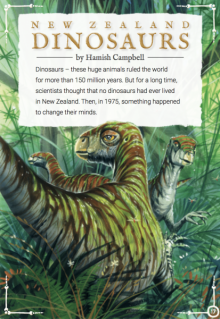
New Zealand Dinosaurs
by Hamish Campbell
illustrated by Spike Wademan
This engaging article explains what is known about the dinosaurs that once roamed New Zealand. It provides some background information on dinosaurs in general, including the most popular theory about why they became extinct. It also explains that for a long time, people believed no dinosaurs had ever lived in this country. Then it gives details of the dinosaur fossils found in various parts of New Zealand, which proved that idea to be wrong.






 Literacy Online home
Literacy Online home
